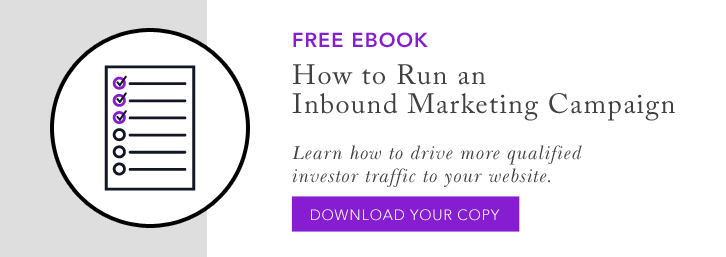

Social Media Profiles for Financial Advisors: Twitter
Welcome to part three of the Social Media Profiles for Financial Advisors series. In this post, we’re covering Twitter and how it can be utilized to grow and promote your services. As with Facebook and LinkedIn, Twitter can be a valuable tool to add to your marketing arsenal. But before you get started, here are some tips and best practices to help you make the most of this social media platform.
Twitter Overview
Twitter is unique from other social media platforms in a number of ways, and for some new users, this can be intimidating. The biggest difference is that the messages – known as “tweets” – are limited to 140 characters. This is known as “microblogging” and is meant to be an efficient way of getting out a message without too much extra information. You can also post links, images and videos. Usernames are known as “handles” and they appear with the “@” symbol in front. For example: “@username.” This is how you can find users on Twitter, mention them and respond to comments. Twitter also was the innovator of using #hashtags on social media to group similar content.
Creating fresh, relevant content for your website or blog can be a challenge. Say goodbye to writer's block! Download our Free eBook: 5 Ways to Source Content for Your Financial Advisor Blog & Website
Retweeting, Replying and Mentioning
Retweeting is when you share another Twitter user’s tweet by tweeting it out to your followers. Hence the phrase “retweeting,” this is very similar to hitting the “share” button on Facebook or LinkedIn. The original tweeter gets their handle sent out with the tweet, known as a “mention.” Retweeting is an essential part of Twitter, as it is the main way content gets shared. Also, if someone mentions you on Twitter, you can then reply to them via a reply on the public page or with a direct message, known as a DM. Those are most useful when an issue is private. But keep in mind, any conversations involving sensitive information should be moved off social media as quickly as possible and to a secure channel.
Don’t forget to use hashtags. Once just the number symbol, the hashtag is now one of the more efficient ways to disseminate and group like-content on social media. For example, if you send a tweet that reads “I love #icecream,” and then searched #icecream within Twitter, all of the other millions of tweets that used the same hashtag will appear. This can be especially helpful for someone looking for specific content or for marketers who want to push a campaign and see how effective it makes its way around Twitter.
Stay Professional
As with all other social media channels, there is a time and place for personal content. When posting on behalf of a business or brand, it’s essential to keep that separate from any personal pages or accounts you manage. Keep content professional, and remember that even though you may only have 140 characters, spelling out words – not using text-message speak – is important. If you can’t get the entire message out on Twitter, it may not be the appropriate channel to push that content from. Perhaps Facebook or LinkedIn would be better options.
Another thing to think about: Keep your professional persona in mind when it comes to the other users you follow from your business page. That information is all viewable from anyone on your page, and if you like any controversial, political or other questionable or highly personal companies or figures, that may be off-putting to any potential customers who have differing views. Your business Twitter account should follow colleagues, industry partners and other resources that would provide content you would be proud to retweet on your page.
Don’t Sit Idle
We all know social media moves fast, but Twitter moves very fast. Because content is typically short and to the point, Twitter feeds can move rapidly. The more people a user is following, the faster that feed moves. If a user has chosen to follow you on Twitter, meaning they have chosen for your tweets to show up in their feed, essentially anything you post is competing with everything else that user follows. That means that if you post once a week, there is a very small chance that any of your followers will see it. To remedy this, most large businesses and brands post new content multiple times a day. While you aren’t likely to post that often, it’s a good barometer for how the bigger companies are handling this social media channel. And while you probably don’t have the resources of an entire social marketing team, you should at minimum, make sure your Twitter page isn’t sitting idle for days in a row.
Get Started
The best way to get started with your social media marketing is to just jump right in. Create a username that is relevant to your business and that would help users find you easily if they searched for you. On Twitter, you also get 160 characters to craft a bio for your business. This is a great place to give a brief description of what you can do and how you can help your clients. Use a professional photo for the main image. You can also utilize the space in the background with a company image to fully customize your page. While Twitter offers some generic backgrounds, it’s recommended that you add something specific to your business to utilize that place on the profile page to further promote your brand.
Once you have your page set up, you’re ready to send your first tweet. Just remember to keep them coming, and while it won’t happen overnight, establishing an effective Twitter presence will help grow your social audience and ultimately, your client base.

Jack Waymire, BA, MBA
Search Here
Categories
- AI (18)
- blogging (2)
- branding (1)
- content (12)
- custodians (1)
- Digital (535)
- email marketing (3)
- fcmo (3)
- fees (1)
- financial advisor marketing (66)
- Google (3)
- Ideas & Tips (125)
- Investor Experience (7)
- lead generation (7)
- linkedin (1)
- Marketing (605)
- newsletters (1)
- Online Transparency (2)
- podcasting (1)
- search engine optimization (4)
- seo (9)
- Social Media (2)
- video (3)
- Websites (172)
- YouTube channel (2)
Recent Posts
-
 October 22, 2025
October 22, 2025 -

-

Top 10 Business Challenges for Smaller Financial Advisor Firms
October 16, 2025 -

How Financial Advisors Use AI to Optimize Website Compliance
October 14, 2025 -

AI Blogging On Your Financial Advisor Website
October 10, 2025

